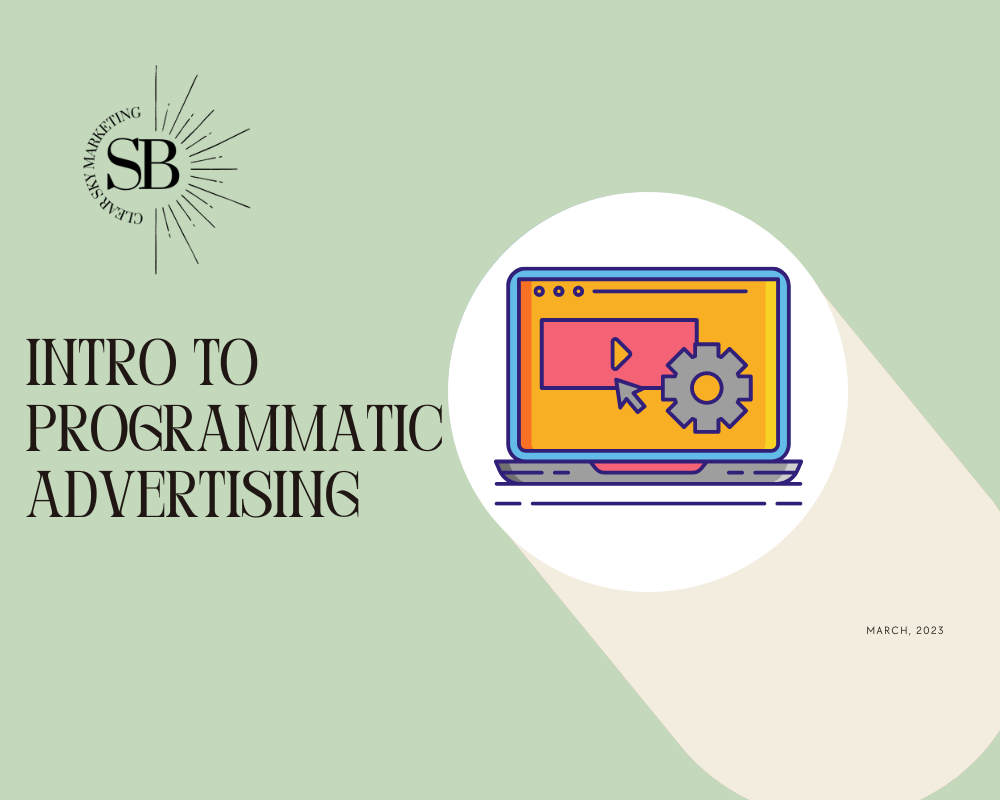Programmatic Advertising
Programmatic advertising is the process of automating the purchase, sale, delivery, and measurement of digital campaigns through advertising technology, more commonly referred to as AdTech. Ad tech includes software and tools that are used to target, deliver, and measure digital advertising efforts. Both programmatic advertising and AdTech promote budget optimization and revenue stream maximization. Programmatic advertising utilizes auction-based software, in which the software places a bid on the ad view. This computerized auction includes two important programmatic advertising roles; advertisers and publishers. Advertisers are those who want to buy the ad space, while publishers are the website owners selling the ad space. Ad space is an area of a website where an advertisement can be placed. One thing to be mindful of when introducing yourself to programmatic advertising is the extensive knowledge needed when using this tool. Below are some important key terms to be familiar with when discussing programmatic advertising
- Demand-side platforms (DSP): allow advertisers and ad agencies to buy ad space from multiple publishers from a single user interface. Once advertisers submit their campaign the DSP filters through its network of publishers for websites that fit the advertiser’s criteria and makes a bid on the “best fit” websites, and then if the bid wins the DSP published the ad and manages payment. DSP also promotes efficiency. This process happens in milliseconds, which allows advertisers to save time and money while publishing their content on ads that match their target market criteria.

- Supply-side platforms (SSP): AdTech platforms used by publishers to manage, sell, and optimize their ad space. SSPs are extremely beneficial to publishers as they allow publishers to increase the amount of sold ad space by creating the link between inventory and DSPs. SSPs play a major role in the real-time bidding (RTB) process, which is the automated auction system in which ads are bought and sold in real-time on a per-impression basis
How Programmatic Advertising Supports Publishers
Programmatic Advertising is an extremely useful tool for Publishers who are trying to sell their ad space and host advertisements relevant to their websites’ content. Below are various elements of programmatic advertising that publishers can use to their benefit:
- Simplicity, rather than spending copious amounts of time trying to manually find advertisers hoping to purchase ad space, programmatic advertising tools allow for this process to be automated.
- Communication, as aforementioned programmatic advertising seamlessly forms the connection between advertisers and publishers allowing the two parties to communicate and collaborate together without friction
- Relevancy, a key component and purpose of programmatic advertising is to create value for both publishers and advertisers which is accomplished by creating connections between the two parties that will produce relevant content. Web visitors will have a more positive reaction to relevant ads, enabling advertisers to successfully reach their target market.
- Efficiency, different bidding options and advertising deals available through programmatic advertising allow for lower costs and increased margins for publishers.
Challenges of Using Programmatic Advertising
Programmatic advertising is a precious tool available for marketers, which allows them to efficiently and effectively sell and buy ad space to reach their target markets. But, there are some challenges that come along with using these tools. As a marketer, it is important to accept that the marketing industry is ever-changing, and with that comes new platforms, technological advancements, privacy policies, etc., which all impact how marketers define and implement strategies. Among those who use programmatic advertising, 50% do not fully understand it. Therefore one main challenge when becoming familiar with these tools is to become more educated to become more confident.

Another challenge to be aware of is impression fraud. The success of an advertisement is determined through various key performance indicators, including impressions, likes, views, etc. and the success of the ad can be completely misconstrued if there is impression fraud involved. This can alter the ad space that is being bid on, and the overall relevancy of the content. It is also important to note that impressions coming from impression fraud (bots, ad stacking, and ghost sites) are still being paid for which is subsequently wasting money and the effectiveness of the ad campaigns. To avoid this from occurring it is important to implement ad-fraud fighting measures and be looking out for suspicious activity. Even with these challenges in mind programmatic advertising is an extremely useful ad-buying technology that all digital marketers should utilize to improve efficiency, save money, and produce relevant quality content.

